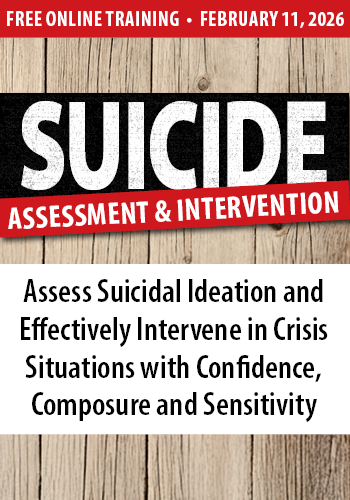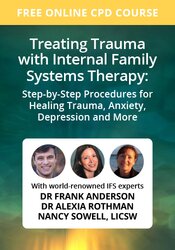Enrol in an online course today for flexible, self-paced learning—no fixed schedule required. Plus, enjoy lifetime access to course materials for convenient revisiting.
10 Ways to Orient Clients Towards Unconscious Feelings

I envision a client’s unconscious feelings as children knocking at a door. Sometimes they tap, and at other times, they bang in desperation. Abandoned feelings hope to gain entry into the therapeutic dialogue as they never cease to yearn for recognition and freedom of expression. Unfortunately, internal forces silence them.
The therapist may unconsciously collude with these forces by changing an uncomfortable topic or appearing to be anxious. We’re unlikely to orient our clients toward intense unconscious feelings until we feel reasonably safe with them ourselves.
I try to orient my clients toward their feelings in the following ways:
- Communicating that I find great value in their emotions and suggesting we pay attention to any rise in feelings in order to relieve suffering.
- Asking permission to take notice of feelings in partnership: “Is it ok if we do our best to notice your feelings together?”
- Seeking consent to give attention to anything that blocks access to feelings (like a habit of detaching or high anxiety). All barriers to feelings (shame, anxiety, guilt, and self-protective strategies) require regulation to allow the passage of feelings. This process calls for ‘shame sensitivity’ and compassion.
- Clarifying the fact that feelings will be found in the body, as they are not abstractions or thoughts. They are sensations like heat rising in the chest or solar plexus, fists forming (anger), a pain in the heart (grief), or an expansive feeling like wanting to throw our arms to the sky (joy).
- Enquiring about feelings and tracking the responses to our comments, for example, “How did you feel when I made that observation?”
- Expressing my caring for the abandoned feelings: “How sad that your feelings yearn for expression, but some mechanism inside you automatically disregards them. I think of feelings as children knocking at the door, hoping we’ll grant them access. How do you imagine they’ll react if we shut them out? I feel their pain.”
- Highlighting the costs if feelings are ignored: “Your wife left you, saying you were very remote. She didn’t have a sense of you. What a terrible price you’ve paid for this disconnection from your feelings!”
- Shifting gears to refocus on feelings soon after we’ve lowered the barriers to feelings.
- Offering a reminder that the client will not be alone if we open the door to feelings. For example, “I know it’s scary to face these difficult, conflicted feelings. But, please know that I’m here for you if you decide to go forward?”
- Differentiating between experiencing feelings vs. acting out or destructively discharging: “We are simply attempting to welcome these energy currents within your body and recognise them. Your feelings are no different from any force of nature, like torrential rain or a tornado. They just are. They do not harm anyone in their purest form. Once you recognise your feelings, you can decide whether you want to share them and how to do so productively.”
As we orient our clients toward a safe experience of their most conflicted unconscious feelings, they often respond with deep gratitude: “Thank you for keeping the focus. You never gave up”; “Thank you for your faith in what I feel”; “No one has tuned into me the way you have.”
I wish all therapists great luck on this formidable yet unimaginably rewarding journey. As we help our clients to create a home for their lost and forgotten feelings, these “children at the door” can be seen for the first time in a new way, with loving acceptance. They become integrated and provide inspiration, guidance, protection, and the capacity for profoundly intimate relationships.
Susan Warren Warshow’s recent book, The Therapist’s Handbook to Dissolve Shame and Defense: Master the Moment will have a sequel, The Practice of Dynamic Emotion Focused Therapy: A Shame Sensitive Workbook, to be published by Routledge in 2023.

















